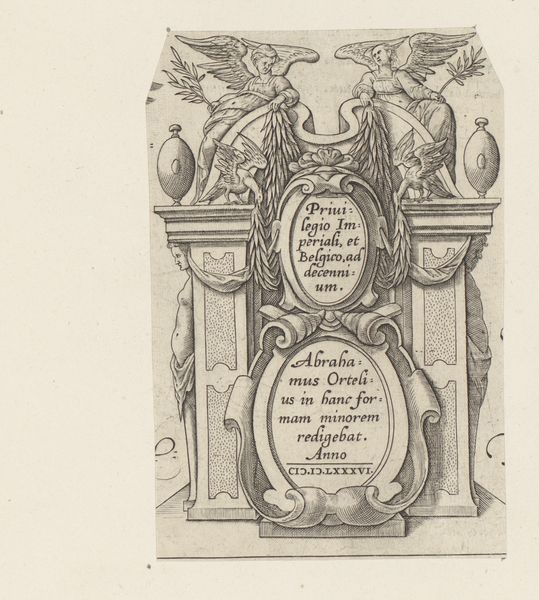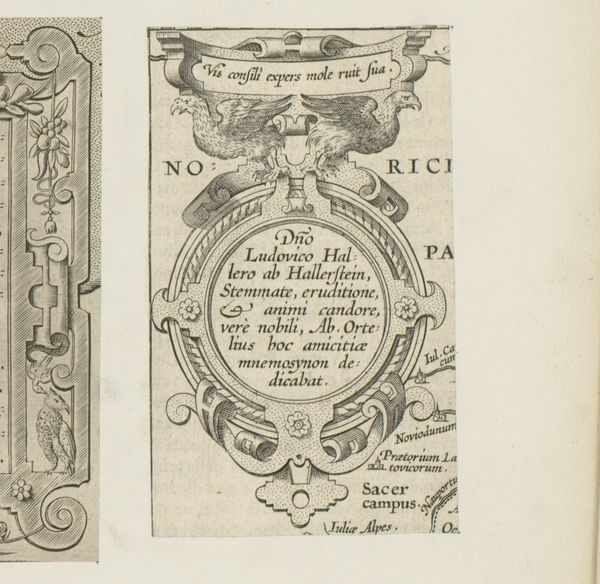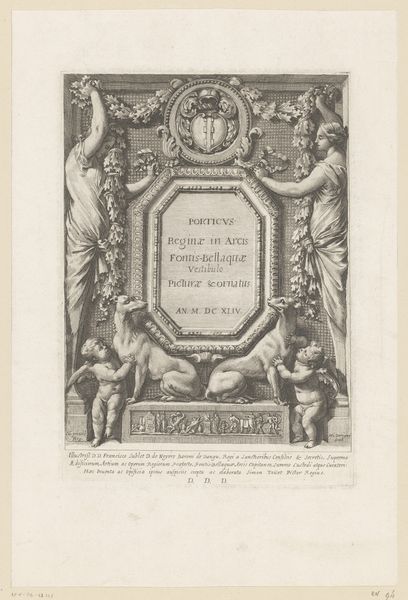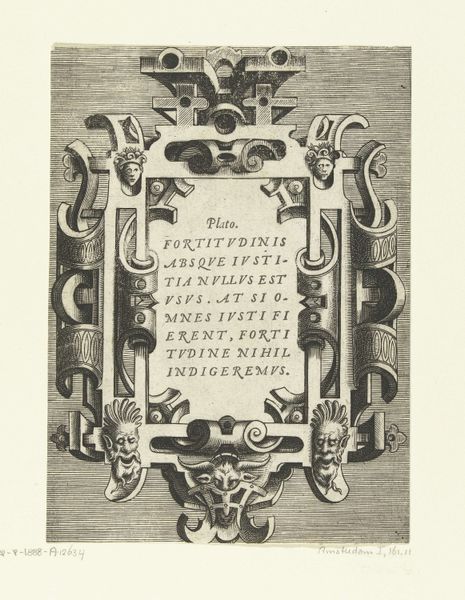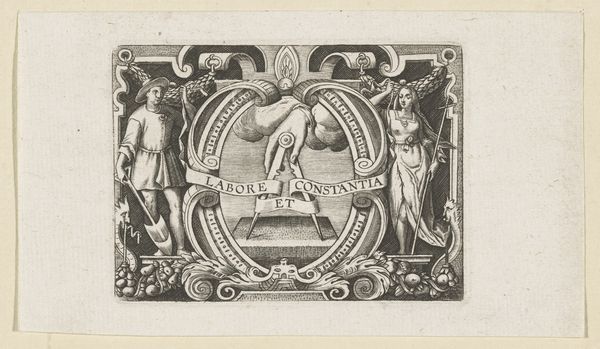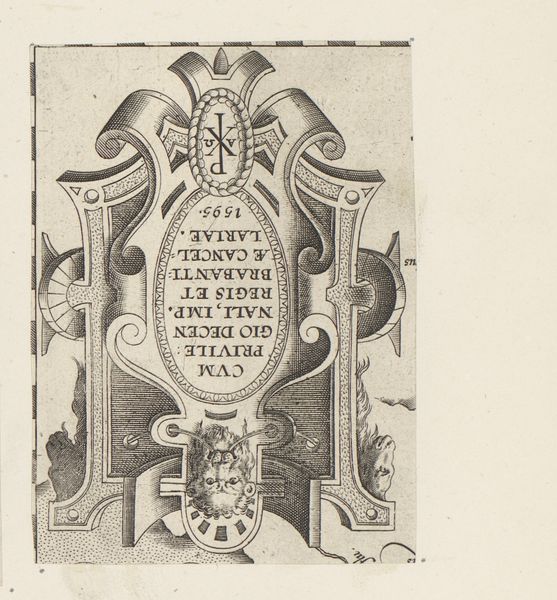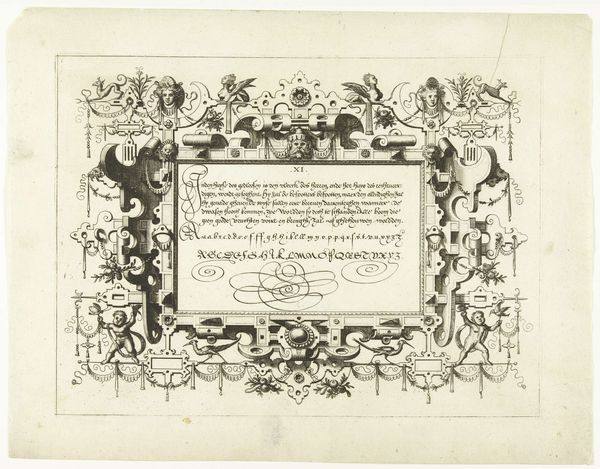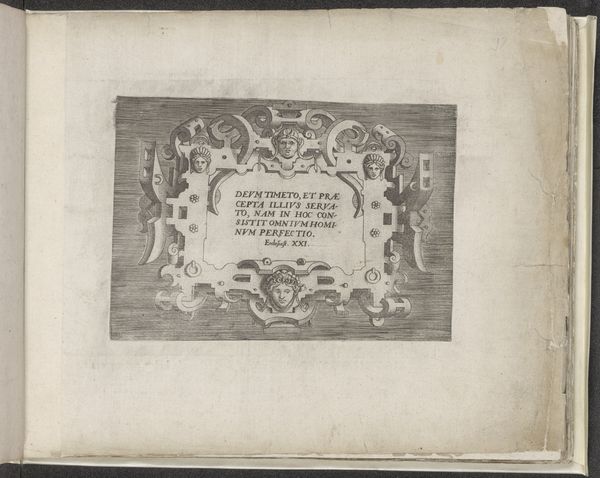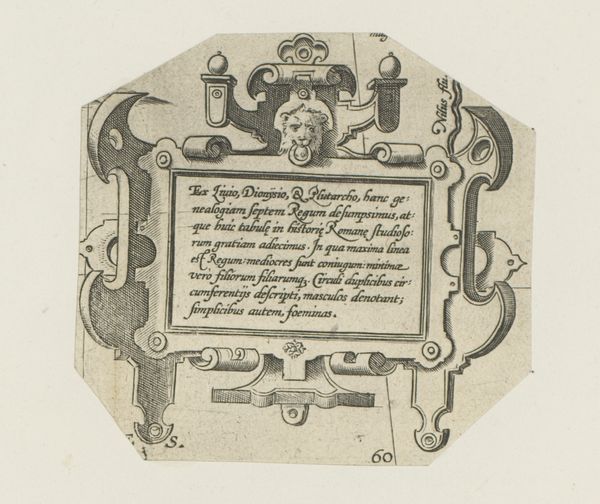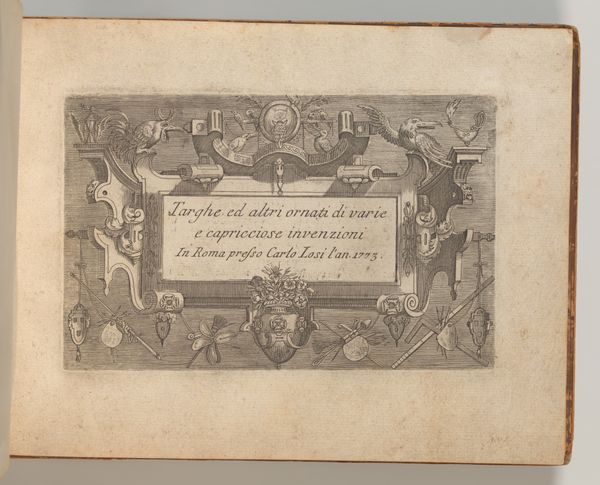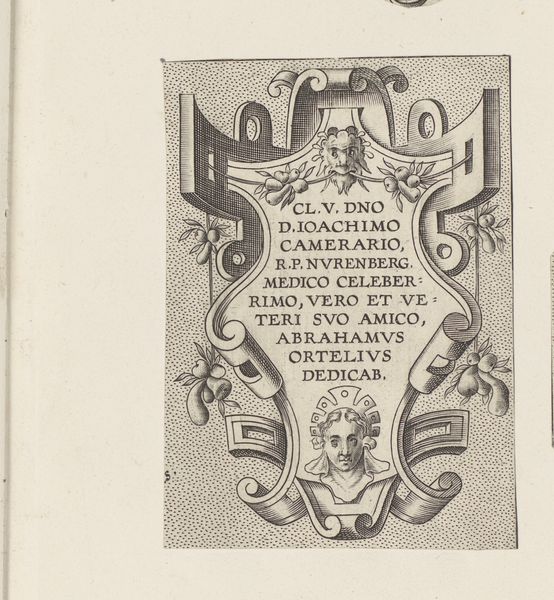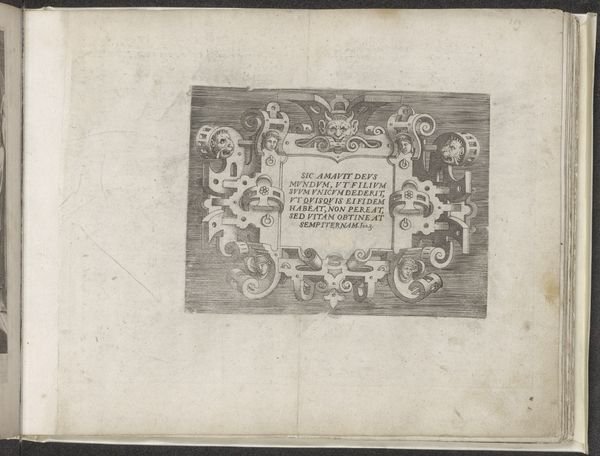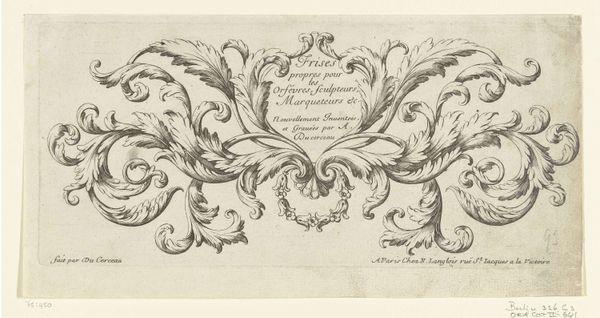
print, engraving
#
allegory
# print
#
mannerism
#
engraving
Dimensions: height 128 mm, width 86 mm
Copyright: Rijks Museum: Open Domain
Curator: Looking at this 1590 engraving, “Cartouche met saterskop en vrouwenmasker,” or “Cartouche with Satyr Head and Female Mask,” I'm struck by its sheer intensity. The level of detail in such a small print is astonishing. What's your immediate impression? Editor: Initially, the piece projects an unsettling duality with the combination of the Satyr and mask. Its symmetry and dense ornamentation are, perhaps, indicators of a social tension inherent within the historical role of printing at that moment. Curator: That tension is intriguing. Cartouches like this were often used for inscriptions, sometimes for maps or portraits. It seems like here, though, the inscription is central to the entire composition, rather than simply being contained by it. Editor: The presence of a female mask versus a Satyr complicates interpretations of value within that period of engraving, and possibly comments on an imbalanced gaze within societal constructs of the late Renaissance. What do we know about this inscription? Curator: The text appears to be a dedication, likely commissioned for a specific individual. Note the use of Latin; its humanist quality certainly speaks to an educated audience capable of appreciating the refined style and the classical allusions within its design. Editor: In considering its original location and reception, where would we position it on a scale that includes varying power structures of that time? Were prints such as this meant for widespread consumption, or perhaps circulated amongst specific networks of academics and elites? Curator: My suspicion is that this engraving would circulate amongst humanist intellectual circles. The artistic skill involved, coupled with its classical references, suggests it functioned as both a marker of personal accomplishment, and a social connector within particular echelons of society. Editor: So it transcends mere aestheticism, operating almost as a currency within those social networks? Curator: Exactly. The “Cartouche” acts as an elaborate social signaling device. A print becomes more than a picture: it is the tangible representation of alliance, humanistic skill, and knowledge. Editor: A very interesting perspective to note that there's more than meets the eye when interpreting engravings like this. Thanks. Curator: Agreed, considering the art-historical circumstances behind art production brings new insights into its lasting significance.
Comments
No comments
Be the first to comment and join the conversation on the ultimate creative platform.
